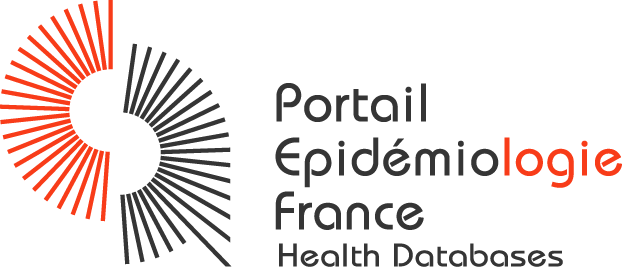 ITMO public health
ITMO public health

Last update : 07/02/2014 | Version : 1 | ID : 5187
| General | |
| Identification | |
| Detailed name | Mild Head Trauma and Post-Concussion Syndrome. Study of Outcome at 5 years. |
| Sign or acronym | PERICLES |
| CNIL registration number, number and date of CPP agreement, AFSSAPS (French Health Products Safety Agency) authorisation | CPP n°2007/49 - 2007-A00807-46 CCP SUD-OUEST ET OUTRE MER III |
| General Aspects | |
| Medical area |
Traumatology |
| Others (details) | Head trauma, post-concussion syndrome |
| Keywords | post-concussion syndrome, Prevalence, follow-up, symptoms, predictive factors |
| Scientific investigator(s) (Contact) | |
| Name of the director | Lagarde |
| Surname | Emmanuel |
| Address | 146 rue Léo Saignat 33076 Bordeaux cedex |
| Phone | +33 (0)5 57 57 15 04 |
| emmanuel.lagarde@isped.u-bordeaux2.fr | |
| Unit | U897 PRÉVENTION ET PRISE EN CHARGE DES TRAUMATISMES ( Equipe de l'ISPED - Institut de Santé Publique, d'Epidémiologie et de Développement) |
| Organization | INSERM - Institut National de la Santé et de la Recherche |
| Name of the director | Ribéreau- Gayon |
| Surname | Régis |
| Collaborations | |
| Funding | |
| Funding status |
Mixed |
| Details | PHRC Local - Fondation Réunica |
| Governance of the database | |
| Sponsor(s) or organisation(s) responsible | INSERM - Institut National de la Santé et de la Recherche Médicale |
| Organisation status |
Public |
| Additional contact | |
| Main features | |
| Type of database | |
| Type of database |
Study databases |
| Study databases (details) |
Cohort study |
| Database recruitment is carried out by an intermediary |
A selection of health institutions and services |
| Database recruitment is carried out as part of an interventional study |
No |
| Additional information regarding sample selection. | Enrolment request at emergency department |
| Database objective | |
| Main objective | To comparatively measure the prevalence of post-concussion symptoms at 5 years and to determine predictive factors. |
| Inclusion criteria | Upon adult admission to the emergency department of CHU de Bordeaux, requests to participate in the study were made to: - all patients with mild head trauma presenting one of more signs of severity (Glasgow score of 15, 14 or 13). - a sample of patients who received a blow to the head without other signs of severity. - case-controls matched according to case age and gender, chosen from patients in the emergency unit for pathologies that did not involve head trauma or potential consequences of the same. |
| Population type | |
| Age |
Adulthood (19 to 24 years) Adulthood (25 to 44 years) Adulthood (45 to 64 years) |
| Population covered |
Sick population |
| Gender |
Male Woman |
| Geography area |
Regional |
| French regions covered by the database |
Aquitaine Limousin Poitou-Charentes |
| Detail of the geography area | Aquitaine |
| Data collection | |
| Dates | |
| Date of first collection (YYYY or MM/YYYY) | 2008 |
| Date of last collection (YYYY or MM/YYYY) | 2008 |
| Size of the database | |
| Size of the database (number of individuals) |
[1000-10 000[ individuals |
| Details of the number of individuals | 3459 |
| Data | |
| Database activity |
Current data collection |
| Type of data collected |
Clinical data Declarative data |
| Clinical data (detail) |
Direct physical measures |
| Declarative data (detail) |
Paper self-questionnaire |
| Presence of a biobank |
Yes |
| Contents of biobank |
Serum |
| Details of biobank content | The blood sample remainder taken during standard routine treatment was used to measure the level of S100B protein. |
| Health parameters studied |
Health event/morbidity Health event/mortality Health care consumption and services Quality of life/health perception |
| Care consumption (detail) |
Hospitalization Medical/paramedical consultation |
| Procedures | |
| Data collection method | Medical examinations and brain CT scans for cases were conducted in the normal course of treatment for people admitted to the emergency department. Participants answered a questionnaire (M0 questionnaire) in order to assess quality of life before the accident and the existence of common functional symptoms during their time in the emergency department. Patients were contacted again at 3 and 12 months (M3 and M12) after enrolment. In order to obtain standardised quantitative information on the patient's status after returning home, the initial M0 questionnaire and M3 and M12 questionnaires were prepared by adapting the 3 questionnaires below: the "Rivermead Post-Concussion Symptoms Questionnaire" (RSQ), the "Rivermead Head Injury Follow Up Questionnaire" and part of the “Short Form 36 Health Questionnaire” (SF36). The last part of these questionnaires is devoted to the evaluation of post-traumatic stress and disabilities regarding daily life activities. |
| Participant monitoring |
Yes |
| Details on monitoring of participants | 3 and 12 months after enrolment. |
| Links to administrative sources |
No |
| Promotion and access | |
| Promotion | |
| Access | |
| Terms of data access (charter for data provision, format of data, availability delay) | Data are available for other researchers in accordance with agreement by the investigating parties. |
| Access to aggregated data |
Access on specific project only |
| Access to individual data |
Access on specific project only |
Partners - FAQ - Contact - Site map - Legal notices - Administration - Updated on December 15 2020 - Version 4.10.05